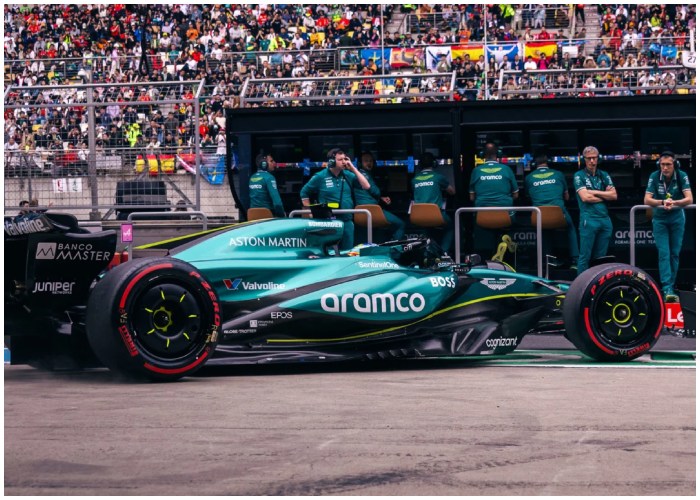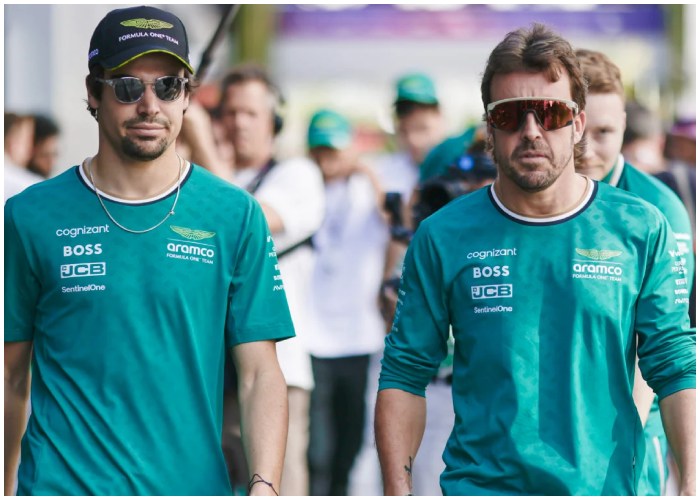One year ago, Aston Martin left the Brazilian Grand Prix with a podium finish and high hopes for the season ahead. But fast-forward to this year, and the team faces a very different reality. Despite a promising start to the season, Aston Martin has struggled to keep up with competitors like Mercedes and McLaren, leaving them perplexed and frustrated. The team has faced numerous challenges, from struggles with new car components to a lack of pace in both wet and dry conditions. Yet, while this season has fallen short of expectations, Aston Martin is focused on applying these hard-earned lessons to build a more substantial car for 2025.
A Season of Mixed Results and Frustrations
Aston Martin’s struggles in Brazil highlighted the ongoing issues that have held them back throughout the season. Last weekend, their race pace was alarmingly slow, with Fernando Alonso noting that the team took “huge risks” just to secure P2 in a wet qualifying session. These recent struggles are a stark contrast for a team that started the season on par with top competitors. Lance Stroll’s crash on the formation lap and Alonso’s brake issues during the race added to the team’s list of woes, revealing serious balance and handling problems. After analyzing their performance, Aston Martin concluded that their brake struggles were caused by instability in the car’s platform, stemming from a rushed floor switch due to qualifying crashes.

Experimenting with Floor Designs
Aston Martin has been experimenting with different floor setups to find the right balance between speed and stability. The floor introduced at the U.S. Grand Prix fell short of expectations, prompting the team to switch between the “Suzuka” floor, suited for slower tracks, and the “Budapest” floor for faster circuits. This experimentation might seem like the team is scrambling, but Aston Martin performance director Tom McCullough explained that it’s part of a longer-term strategy. Aston Martin’s goal is to gather data from both designs to inform the development of next year’s car. Free practice in Mexico focused on aero mapping rather than race preparation, an approach aimed at refining their aerodynamic understanding for the 2025 season.
Addressing Development Challenges
Team principal Mike Krack has acknowledged that this season has been challenging due to unmet expectations. “We set ourselves the challenge of creating a car that could develop throughout the season to compete with the top four, and we’ve fallen short,” Krack said. He emphasized the need to learn from these setbacks, particularly the frequent introduction of significant updates that may have disrupted the car’s balance and stability. Aston Martin’s approach, at times, may have prioritized rapid updates over maintaining a consistent platform. Watching McLaren’s steadier development path has shown Aston Martin that sticking with fewer, more refined updates can sometimes yield better results.
Laying the Groundwork for 2025
Looking ahead, Aston Martin focuses on using this season’s struggles to build a more robust, more competitive car for 2025. Their design and engineering teams apply lessons from their successes and failures to ensure they’re better prepared next year. With new leadership, including CEO Andy Cowell and technical experts Adrian Newey and Enrico Cardile, Aston Martin is refining its development strategy. Additionally, a new simulator and wind tunnel will enhance their ability to test and improve car components more effectively. McCullough expressed confidence in the team’s progress, noting, “We’re making good strides in the wind tunnel, and while we haven’t brought transformative parts to the track this year, that’s our goal for next season.”

Learning Through Setbacks
Aston Martin’s 2024 season has been far from the success they envisioned, but the team is determined to use this experience as a stepping stone toward a stronger future. With critical changes in leadership, new technology on the horizon, and a focus on quality over quantity in their updates, Aston Martin is positioning itself for a comeback in 2025. While this season may end at a low point, the team’s commitment to learning from its challenges suggests that brighter days are ahead. As Krack said, “We’re in a much better place than last year, asking more questions and working to ensure what we expect is what we deliver.” For Aston Martin, this year’s lessons could be the foundation of a more competitive and resilient team in the seasons to come.